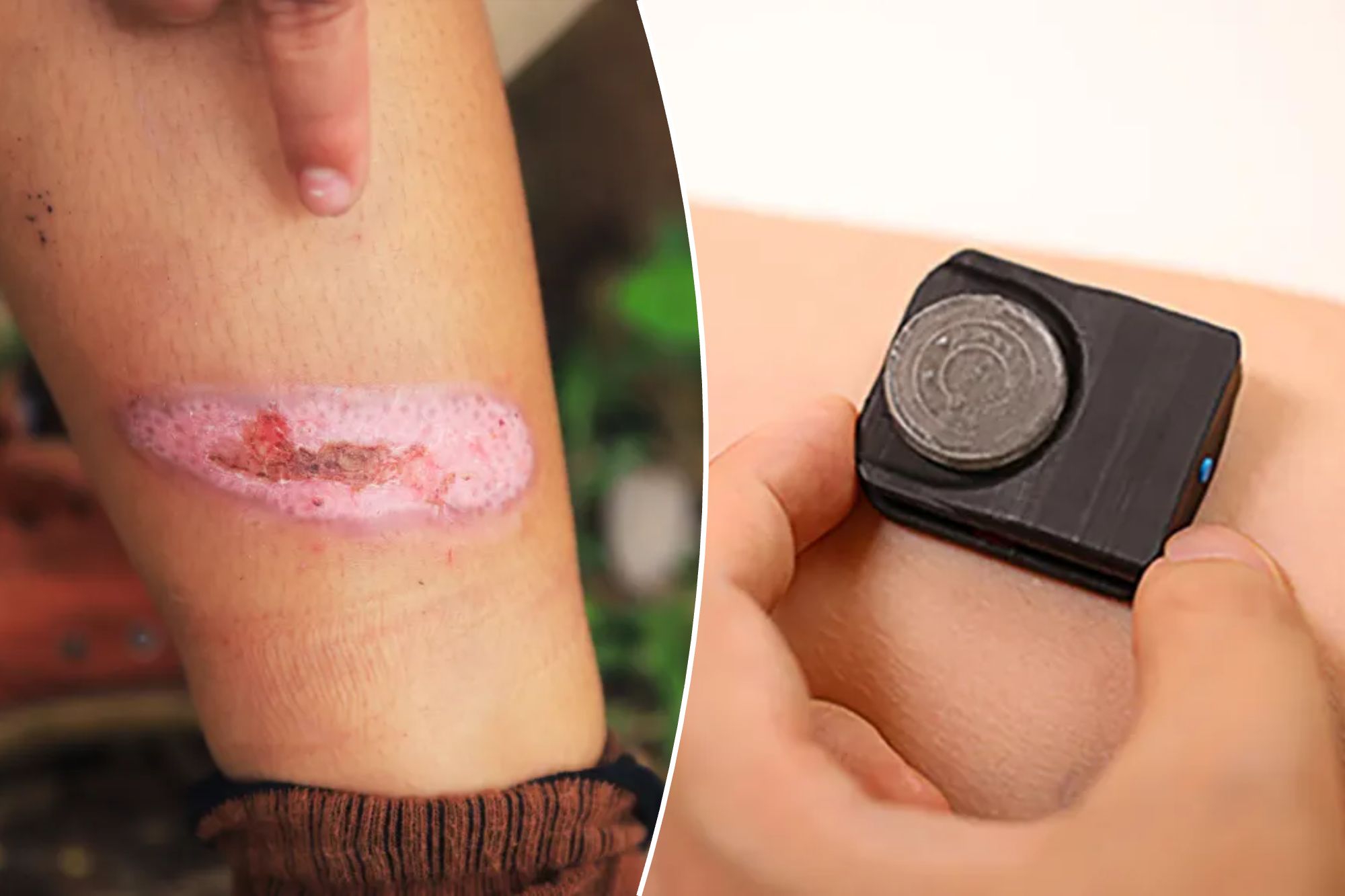
Your skin is not simply on – it is clumsy. And now, science is smelling it.
Researchers at Northwestern University have developed the first contact -free wearing device in the world that can monitor your health by measuring the gases emitted and naturally submerged without ever touching it.
“This technology has the potential to transform clinical care, especially for vulnerable populations, including newborn babies, the elderly, patients with diabetes and others with compromised skin,” said Dr. Guillermo A. Ameer, a professor of biomedical engineering co-guided the study.
Secret signals
Your skin is not just an obstacle; It is a two -way path between your body and the outside world.
Day every day, gases like carbon dioxide, water vapor, oxygen and unstable organic compounds (VOC) move in and out through the skin, which also protect you from irritants, toxins and allergens in the environment.
The device developed by researchers Northwestern can monitor all that activity without throwing a finger on you, opening a new window on skin health.
Small but powerful
The tool is only two centimeters long and one and a half spacious-and loaded with sensors that attract gas samples through a mini room that is suspended just above the skin without contacts.
This is a player of the game, as most coated equipment should be glued directly to the skin, which can be a challenge for people with fragile or damaged tissue.
The data it collects can give knowledge of everything, from wound healing and hydration levels to early signs of infection and even exposure to toxic chemicals.
“For workers in potentially dangerous environments, it is useful to know how many of those dangerous species are entering the body through the skin,” said Dr. John Rogers, a professor and researcher in Northwestern who co-directed the study.
Real -time monitoring at your fingertips
One of the biggest benefits of compact coating is that it would allow patients to manage their skin health at home, eliminating the need for large, traditional hospital equipment.
Even better, it is synchronized with your smartphone or tablet to provide real -time data in the gases your skin is releasing and absorbing.
Researchers said this quick and accessible information can help health care providers make faster, more informed treatment decisions, which is particularly important for wound healing.
“The description of antibiotics for wounds can be a little of a gambling,” Ameer said. “Sometimes it is difficult to show whether a wound is infected or not. By the time it is clear, it may be too late, and the patient may develop sepsis, which is extremely dangerous.”
Increased water vapor, CO2 and VOC are linked to bacteria growth and slower healing, so researchers said monitoring these factors could help guardians detect infections earlier and more accurately, enabling faster intervention and better health results.
“Being able to monitor closely, constantly monitoring a wound and prescribing an antibiotic to the earliest sign of infection is a noticeable and important interest,” Ameer said.
Next steps
The northwestern team predicts that the device will be used to improve the effectiveness of errors, skin care products and medicines designed to improve skin health.
For example, CO2 and Voc attract mosquitoes and other pests. By measuring these skin emissions, this can help scientists develop better strategies to keep them away.
Equipment can also help dermatologists measure as soon as lotions and creams penetrate the skin while helping researchers evaluate cosmetics safety and personal care products.
Looking forward, researchers want to refine the device’s skills, including adding a sensor to monitor changes in pH levels and the creation of gas sensors with more chemical selectivity for early detection of organs dysfunction.
“This technology is not just about measuring gases and relevant skin features,” Rogers said.
“It is about predicting general health, preventing infection and disease and creating a future where personalized care is driven by continuous pursuit of real-time, non-invasive health,” he continued.
#worn #sensor #track #health #touching #skin
Image Source : nypost.com